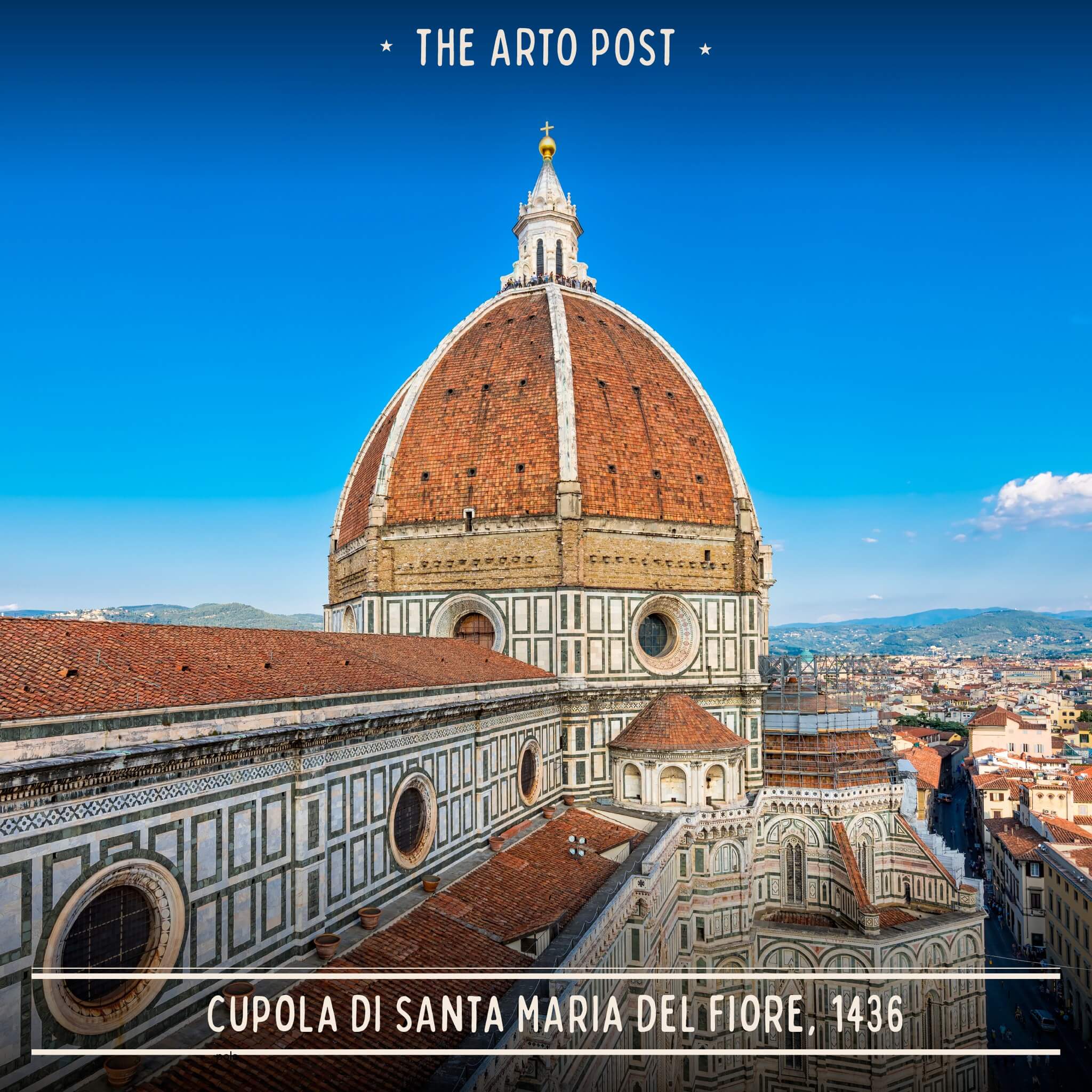Santa Maria del Fiore: Brunelleschi’s triumph

Filippo Brunelleschi was a goldsmith, sculptor, engineer and architect; he was the one who discovered the geometric rules of perspective! During the construction of the dome of Florence Cathedral, he invented devices, cranes and suspension bridges to transport materials to the top; he also designed new types of scaffolding with guardrails to prevent workers from falling!
THE DOME OF SANTA MARIA DEL FIORE
The dome of Santa Maria del Fiore, with an internal diameter of 45.50 metres, an external diameter of 54.8 metres and a weight of 37,000 tonnes, rises to a height of 116 metres and is still the largest masonry dome in the world today.
This Florentine masterpiece encapsulated the best of the engineering and architecture of previous centuries and became an inspiration for generations of architects who, for the first time, saw the achievements of the past, which had seemed unattainable, surpassed.
The Renaissance could truly be said to have begun!
Works such as the Pantheon were objects of admiration and inspiration for Brunelleschi, who remained in Rome for 15 years to study and understand how to overcome the difficulties of constructing the dome: a solution had been sought for 50 years, and given the size of the cathedral, it was unthinkable to build a wooden framework that would start from the ground and reach heights of more than 90 metres (equivalent to 31 floors).
Brunelleschi’s idea was to create a self-supporting dome that would be able to stand on its own during every phase of construction.
It took 16 years of work to complete, using more than four million bricks and employing 265 masons, blacksmiths, carpenters, woodcutters, wood sawyers and stonecutters, but in the end Brunelleschi built a double-shell dome: basically, the structure consists of two different domes, separated by an empty space of about one metre and twenty centimetres, which made it lighter and easier to maintain if necessary.
To achieve this, the Florentine genius invented devices, cranes and suspension bridges to transport materials to the top. He also devised new types of scaffolding with guardrails to prevent workers from falling, support points to allow workers to climb up and down more easily, lighting for the corridors and rainwater drainage systems, and openings to channel the wind.
In essence, Brunelleschi had conceived the first ‘modern’ construction site.
Want to discover more fascinating facts? Now available online